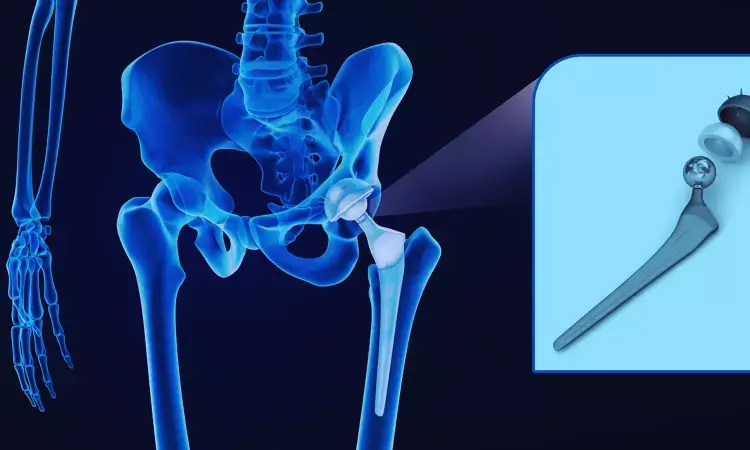- Home
- Medical news & Guidelines
- Anesthesiology
- Cardiology and CTVS
- Critical Care
- Dentistry
- Dermatology
- Diabetes and Endocrinology
- ENT
- Gastroenterology
- Medicine
- Nephrology
- Neurology
- Obstretics-Gynaecology
- Oncology
- Ophthalmology
- Orthopaedics
- Pediatrics-Neonatology
- Psychiatry
- Pulmonology
- Radiology
- Surgery
- Urology
- Laboratory Medicine
- Diet
- Nursing
- Paramedical
- Physiotherapy
- Health news
- Fact Check
- Bone Health Fact Check
- Brain Health Fact Check
- Cancer Related Fact Check
- Child Care Fact Check
- Dental and oral health fact check
- Diabetes and metabolic health fact check
- Diet and Nutrition Fact Check
- Eye and ENT Care Fact Check
- Fitness fact check
- Gut health fact check
- Heart health fact check
- Kidney health fact check
- Medical education fact check
- Men's health fact check
- Respiratory fact check
- Skin and hair care fact check
- Vaccine and Immunization fact check
- Women's health fact check
- AYUSH
- State News
- Andaman and Nicobar Islands
- Andhra Pradesh
- Arunachal Pradesh
- Assam
- Bihar
- Chandigarh
- Chattisgarh
- Dadra and Nagar Haveli
- Daman and Diu
- Delhi
- Goa
- Gujarat
- Haryana
- Himachal Pradesh
- Jammu & Kashmir
- Jharkhand
- Karnataka
- Kerala
- Ladakh
- Lakshadweep
- Madhya Pradesh
- Maharashtra
- Manipur
- Meghalaya
- Mizoram
- Nagaland
- Odisha
- Puducherry
- Punjab
- Rajasthan
- Sikkim
- Tamil Nadu
- Telangana
- Tripura
- Uttar Pradesh
- Uttrakhand
- West Bengal
- Medical Education
- Industry
Aggressive Presentation and Rapid Progression of Osteonecrosis of the Femoral Head after COVID 19

Palanisami Dhanasekararaja et al reported the post COVID -19 osteonecrosis of femoral head (ONFH) case series in Indian Journal of Orthopaedics.The authors elucidated the unique features of ONFH associated with COVID-19.
Consecutive 22 patients (39 hips) recovered from COVID-19 and presented with ONFH from November 2020 to October 2021 were included in the study. All the patients received corticosteroids as a supportive treatment during COVID-19. Patients were classified into two types based on the type of presentation, namely classic ONFH and rapidly destructive coxarthrosis (RDC) depending on radiographs, MRI, inflammatory markers and hip aspiration findings. Hip aspiration was done for patients presenting with elevated inflammatory parameters to rule out associated septic arthritis. All the patients underwent initial conservative therapy with bisphosphonates, calcium and non-steroidal anti-inflammatory agent. Harris hip score was used to evaluate the functional outcome before and after treatment.
The observations of the study were:
• There were 20 males and 2 females.
• The mean age was 38.8 years (range 20–74 years).
• The mean BMI was 27.6±4.4.
• The mean time to diagnose of ONFH from the onset of hip symptoms was 39.3 days (range 10–90 days).
• The average duration of onset of hip symptoms after COVID 19 infection was 7.5 months (range 3 – 11 months).
• Seventeen out of 22 patients had bilateral ONFH. Two patients have diabetes and 18 patients have no associated comorbidities.
• Femoral head showed a large necrotic area with grade 3 and 4 in 14 hips (35.9%) according to modifed Kerboul angle and type C involvement in 28 hips (71.8%) according to JIC classification.
• The average cumulative dose of methylprednisolone equivalent was 811 mg (range 200–2100 mg) and the average duration of steroid intake was 2.8 weeks.
• There was significant elevation in the inflammatory markers in RDC group compared to classic ONFH (p< 0.05).
• The Harris hip score improved from 63.6±23.2 at presentation to 82.6±9.6 after treatment (p< 0.05).
• Three patients had features of RDC. Among the three patients with RDC, two patients had rapid progression of ONFH and underwent total hip arthroplasty (THA). The third patient is awaiting a THA.
The authors concluded that - Patients who recover from COVID-19 presenting with hip pain should be evaluated by MRI of both hips for early diagnosis of ONFH. The ONFH after COVID-19 can have a varied presentation. While the most common presentation is like classical ONFH, some patients can have an acute and aggressive presentation with rapid destruction. They have features like acute severe pain at presentation, elevated serological markers and extensive periarticular bone and soft tissue edema noted in the MRI. Bisphosphonates may be useful to prevent collapse and slow the disease progression but these patients need a longer follow-up to evaluate its efficacy. A low cumulative dose of steroids in our patients suggests that the COVID-19 associated with vasculitis may play a role in the pathogenesis of ONFH.
Further reading:
Aggressive Presentation and Rapid Progression of Osteonecrosis of the Femoral Head After COVID 19
Palanisami Dhanasekararaja, Dhanasekaran Soundarrajan et al
Indian Journal of Orthopaedics (2022) 56:1259–1267
https://doi.org/10.1007/s43465-022-00635-2
MBBS, Dip. Ortho, DNB ortho, MNAMS
Dr Supreeth D R (MBBS, Dip. Ortho, DNB ortho, MNAMS) is a practicing orthopedician with interest in medical research and publishing articles. He completed MBBS from mysore medical college, dip ortho from Trivandrum medical college and sec. DNB from Manipal Hospital, Bengaluru. He has expirence of 7years in the field of orthopedics. He has presented scientific papers & posters in various state, national and international conferences. His interest in writing articles lead the way to join medical dialogues. He can be contacted at editorial@medicaldialogues.in.
Dr Kamal Kant Kohli-MBBS, DTCD- a chest specialist with more than 30 years of practice and a flair for writing clinical articles, Dr Kamal Kant Kohli joined Medical Dialogues as a Chief Editor of Medical News. Besides writing articles, as an editor, he proofreads and verifies all the medical content published on Medical Dialogues including those coming from journals, studies,medical conferences,guidelines etc. Email: drkohli@medicaldialogues.in. Contact no. 011-43720751


